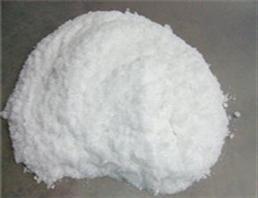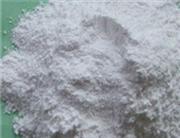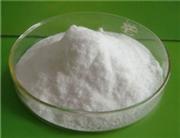Factory Direct Antibotic Dalbavancin with High Purity
(CAS: 171500-79-1)
=====================================
Chemical Information:
Quick Details:
| Product name |
Dalbavancin |
| CAS NO. |
171500-79-1 |
| Category |
Pharmaceutical Raw Materials,Active Pharmaceutical Ingredients,Bulk Drugs,Fine Chemicals. |
| Standard |
purity:>99% |
| Appearance |
Dalbavancin powder |
| Shelf life |
2 years |
| Usage |
Dalbavancin is a novel second-generation lipoglycopeptide antibiotic. |
| Storage |
Dalbavancin should be stored in a well-closed container at low temperature, keep away from moisture, heat and light. |
Product Name: Dalbavancin
Model No.: CYN-271
CAS No.: 171500-79-1
Molecular Formula: C88h100cl2n10o28
Molecular Weight: 1816.69
Appearance: White Crystalline powder
Melting Point: N/A
COA: Available
MSDS: Available
Spectrum: Available
Purity: 99%+
Suitable People: ALL People
Product Specifications: Pharmaceutical Grade
Standard: Qualified
MOQ(Minimum Order Quantity): 10g
Payment: L/C, T/T, Western Union
Shipment: EMS, DHL, FedEx
Packing: Aluminium Foil Bag or as Required
=====================================
Product Description:
Dalbavancin is a novel second-generation lipoglycopeptide antibiotic. It belongs to the same class, the most widely used and one of the few treatments available to patients infected with methicillin-resistant Staphylococcus aureus (MRSA).
Dalbavancin is a semisynthetic lipoglycopeptide that was designed to improve upon the natural glycopeptides currently available.
Puhopharma specializes in controling the quality and reducing the impurities of Dalbavancin.
Our Dalbavancin is with the best quality and the most competitive price in China.
Dalbavancin (INN, trade names Dalvance in the US and Xydalba in Europe) is a novel second-generation lipoglycopeptide antibiotic. It belongs to the same class, the most widely used and one of the few treatments available to patients infected with methicillin-resistant Staphylococcus aureus (MRSA).
Dalbavancin is a semisynthetic lipoglycopeptide that was designed to improve upon the natural glycopeptides currently available.
It possesses in vitro activity against a variety of Gram-positive pathogens including MRSA and methicillin-resistant Staphylococcus epidermidis (MRSE).
It is a once-weekly, two-dose antibiotic, the rights to which Actavis acquired when it bought Durata Therapeutics in 2014.
The Food and Drug Administration approved dalbavancin in May 2014 for the treatment of acute bacterial skin and skin structure infections (ABSSSIs) caused by certain susceptible bacteria such as Staphylococcus aureus including methicillin-susceptible and methicillin-resistant strains of Streptococcus pyogenes, in intravenous dosage form.
=====================================
Applications/Usage:
Dalbavancin is an antibiotic used to treat acute bacterial skin and skin structure infections (ABSSSI) in adults caused by susceptible Gram-positive organisms, including methicillin-resistant Staphylococcus aureus(MRSA).
It has strong activity against many Gram-positive bacteria, including methicillin-sensitive and methicillin-resistant Staphylococcus aureus, Streptococcus pyogenes, Streptococcus agalactiae, Streptococcus anginosus,Streptococcus intermedius, and Streptococcus constellatus.
Dalbavancin is a semi-synthetic glycopeptide prepared from A40926 by introducing a positively charged lipophilic moiety in a previously unexplored region of the natural glycopeptide. This modification provides a longer in vivo half life, and improved in vitro activity against a variety of Gram positive and multi-drug resistant isolates such as MRSA and MRSE.
=====================================
Drug Interaction:
Clinical drug-drug interactions with dalbavancin have not been studied, and dalbavancin does not appear to interact with cytochrome P450 substrates, inhibitors, or inducers. It was found to have an in vitro synergistic interaction with the antimicrobial oxacillin, but the clinical significance of this interaction has yet to be established.
=====================================
Mechanism of Action:
Dalbavancin is a lipoglycopeptide belonging in the same glycopeptide class. Similar to other glycopeptides, dalbavancin exerts its bactericidal effect by disrupting cell wall biosynthesis. It binds to the D-alanyl-D-alanyl residue on growing peptidoglycan chains and prevents transpeptidation from occurring, preventing peptidoglycan elongation and cell wall formation. Dalbavancin also dimerizes and anchors itself in the lipophilic bacterial membrane, thereby increasing its stability in the target environment and its affinity for peptidoglycan.
Antimicrobial activity correlates with the ratio of area under the concentration-time curve to minimum inhibitory concentration for Staphylococcus aureus.
=====================================
Side Effects:
The most common adverse reactions encountered in Phase II and Phase III trials were nausea (5.5%), headache (4.7%), and diarrhea (4.4%), as well as rash (2.7%) and itchiness (2.1%).
=====================================
COA:
| Items |
Standard |
| Description |
White or almost white, crystalline powder |
| Water |
≤0.5% |
| Residue on ignition |
≤0.1 |
| Limit of chloride |
NMT0.03% |
| Heavy metals |
NMT0.001% |
| Methanol |
NMT0.1% |
| Alcohol |
NMT0.1% |
| Related components A |
NMT0.5% |
| Any unknown impurity |
NMT0.10% |
| Total impurities |
NMT2.0% |
| Assay |
98.0%~102.0% |

 China
China



